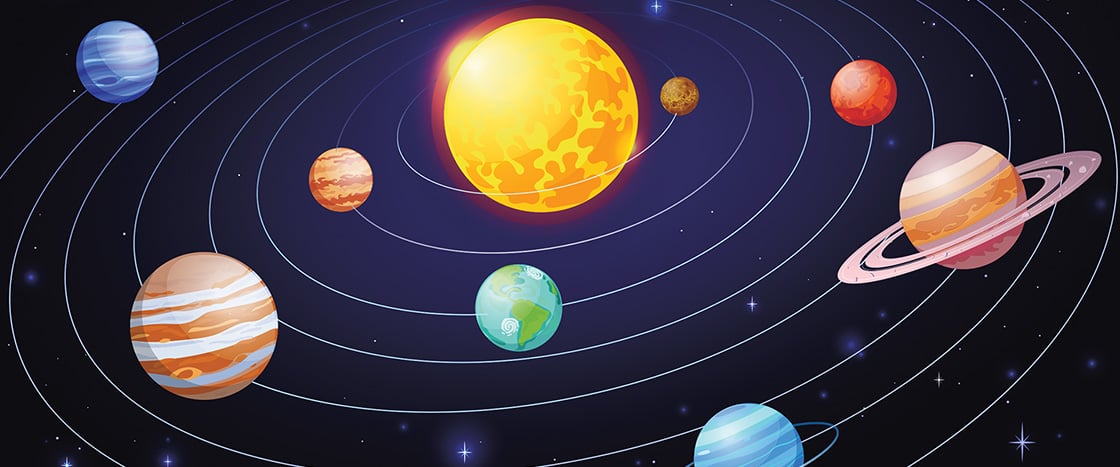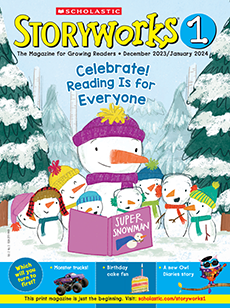That is our planet. It is our home sweet home.

Life in Space
You are going to read an article about alien spaceships. Some people think they have seen them! Here are four facts to know first.
Learning Objective: Students will build background knowledge about space to prepare for the Big Read-Aloud.
Standards
1. We live on Earth.
2. There is life on Earth.
We live here, after all. So do plants and animals.
3. Other planets may have life too.
There are billions of planets in space. Is there life on any of them? Scientists think there might be.
4. People say they have seen UFOs.
Some people think they have seen a UFO. UFO stands for unidentified flying object. Unidentified means we don’t know what it is.
More About the Article
English Language Arts Focus
Key details
Science Focus
Earth and space
Implementation
- Whole group
Pairings and Text Connections
- In this issue: “Big Read-Aloud: Alien Mystery”
- Suggested books: Fly Guy Presents: Space by Tedd Arnold
Before-Reading Resources
- Vocabulary slideshow (5 minutes) alien, planet, UFO, unidentified
Suggested Reading Focus
Build background knowledge (20 minutes)
- Activate children’s background knowledge by asking them what they know about outer space. Write their ideas on chart paper or the whiteboard.
- Preview the article by pointing out the nonfiction text features. Ask them what they notice about the pictures.
- Read the article. Stop to check for comprehension with each of the bolded vocabulary words.
- Ask students to recall something they learned from the words or pictures in the article. Summarize their learning through discussion or on chart paper.
After-Reading Skills Practice
Skills: Practice researching/key details; Comprehension/knowledge (15 minutes)
